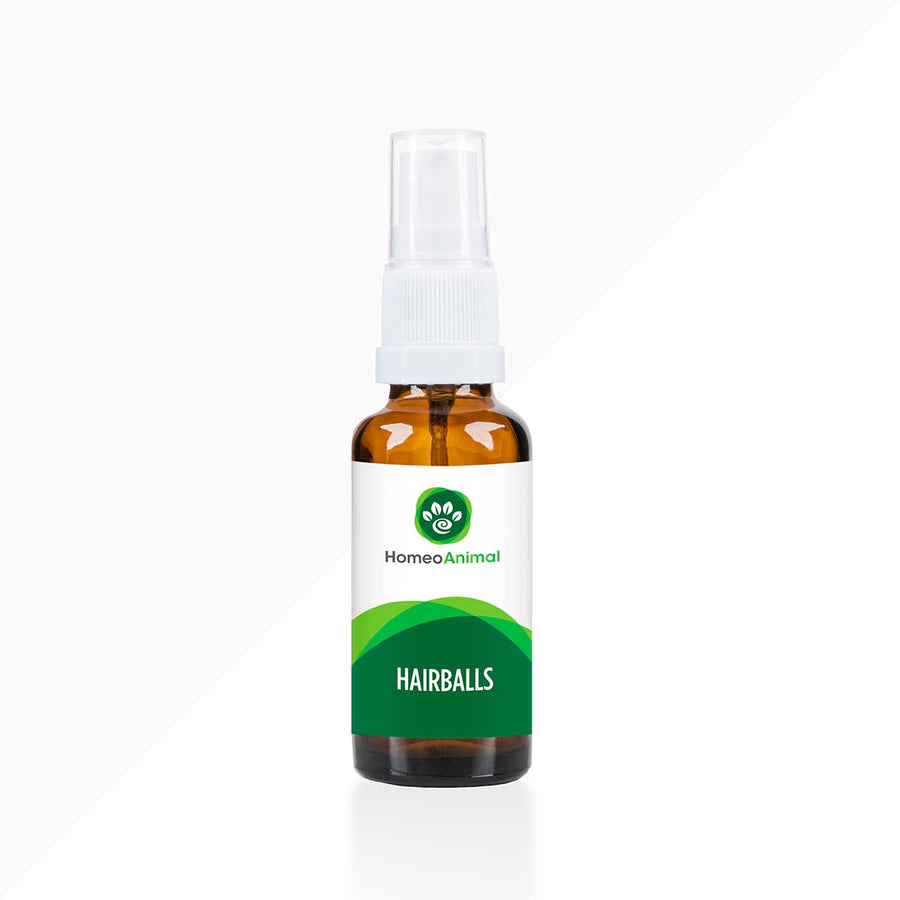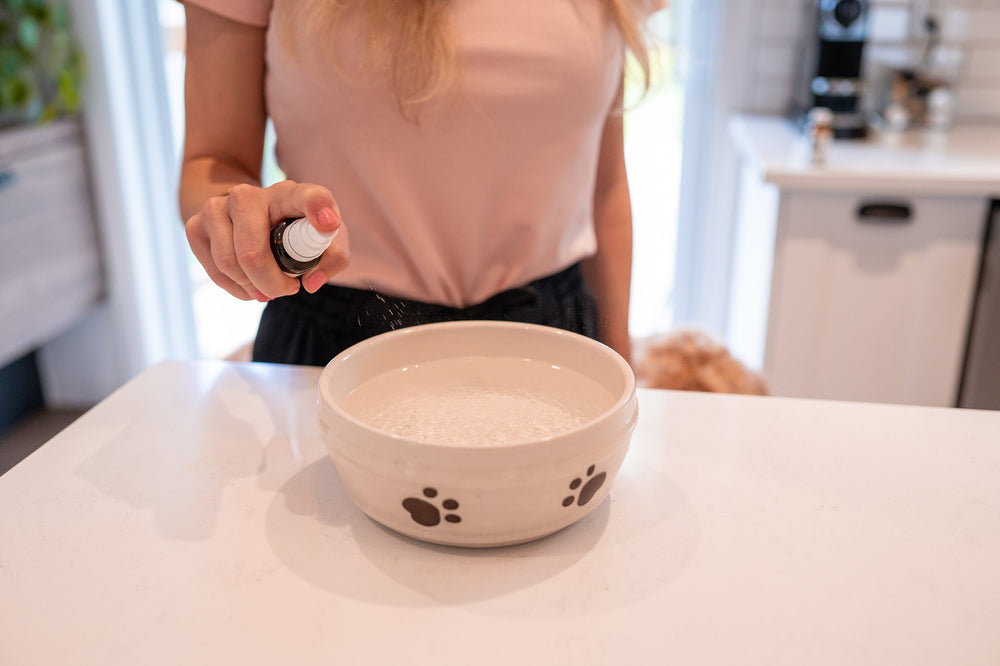The Complete Guide to Managing Cat Hairballs
An occasional hairball is nothing to worry about, but frequent hairballs could be a sign of an underlying health concern.
In this blog post, I’ll guide you through everything you need to know about cat hairballs and how to manage them effectively. While many people think hairballs are simply swallowed hair, they can also be signs of underlying health issues in cats.
What Does a Cat Hairball Look Like?

A cat hairball typically appears as a cylindrical mass of ingested hair, often resembling a sausage in shape. While long-haired cats such as Persians and Maine Coons are particularly susceptible to this issue, short-haired cats can also experience hairball formation.
Hairballs form when loose hair gets stuck to a cat's tongue during grooming and is swallowed. Since hair cannot be digested, it usually passes through the digestive tract and is expelled in the stool. However, in some cases, the hair is regurgitated—or via cat vomiting—as a hairball.
Although a typical cat hairball is about an inch long, older cats can expel larger ones due to the increased time they spend grooming and ingesting loose hair. In contrast, kittens and young cats are less likely to develop hairballs.
Do Cat Hairballs Indicate Illness?
Cats develop hairballs due to excessive grooming, which is more common in long-haired breeds such as Persians and Maine Coons. In most cases, occasional hairballs are nothing to be alarmed about, but it can depend on how frequently they occur.
Hairballs do not necessarily indicate a problem with your cat's stomach.
However, the presence of hairballs may indicate problems with your cat's stomach, small intestine, or other parts of the gastrointestinal tract. Additionally, if your cat frequently exhibits unproductive retching or coughing, it could be a sign of a respiratory issue, such as asthma.
Are Hairballs a Danger to Your Cat’s Digestive Tract?

A cat hairball typically doesn't pose a problem to its digestive system because it is usually expelled through defecation or vomiting.
In my experience as an animal homeopathy expert, I've spoken with many pet parents who have expressed concern about what happens if a hairball gets stuck in a cat's esophagus. To reassure them, it's important to emphasize that a cat hairball is not typically a choking hazard.
However, it's a different story if a cat hairball becomes too large to pass through the stool, potentially leading to constipation. Common signs of this issue include lethargy, unsuccessful attempts to defecate or complete avoidance of the litter box, abdominal swelling, pawing at the stomach, increased vocalization, and loss of appetite.
Similarly, a cat hairball can become obstructed if a foreign object is present. Many cats inadvertently ingest objects such as pieces of plastic, paper clips, hair ties, buttons, coins, or yarn. This can lead to a serious problem if the object is not promptly and properly removed.
5 Simple Solutions for Managing Cat Hairballs
Now that we've covered the basics, let's explore some effective solutions for managing hairballs in cats. These recommendations focus on essential cat health practices, some of which you may already be following. If not, now is the perfect time to start. Let's dive in!
#1. Regularly brush your cat's coat to reduce shedding.
Did you know that regular grooming is the best way to prevent hairballs in cats? By removing loose fur, you stop it from being swallowed when your cat grooms itself, reducing the chances of hairballs forming.
If you're unsure how to properly brush your cat, here are some simple tips and tricks to help you get started:
- Choose the right brush for your cat's coat. Contrary to popular belief, there’s no such thing as a "universal brush." For short-haired cats, use wide-toothed combs, while long-haired cats benefit from either wide-toothed combs or slicker brushes.
- Slow and steady wins the race. Cats are often startled by surprises, and grooming is no exception. Before you begin, let your cat sniff and inspect the comb or brush. Giving them time to get familiar with the tool will make the process smoother and less stressful.
- Always brush in the direction of your cat's fur to remove loose hair more effectively. Pay special attention to problem areas such as the belly, inner thighs, legs, behind the neck, and around the ears, brushing gently to avoid causing discomfort.
- Keep an eye out for tangles and knots while grooming, treating it like a mini-physical exam. When you find them, go slowly and gently to avoid hurting your cat. Rushing through knots can cause discomfort, so take your time to carefully smooth out the fur.
Keep in mind that beyond adult cats tend to groom themselves more often than younger ones, which can lead to frequent hairballs. Regular brushing can help reduce the amount of loose fur they ingest during grooming.
#2. Consistent playtime sessions help prevent cat hairballs.

Older cats groom themselves more often, which is why they’re more prone to hairballs than younger cats. To reduce too much grooming, keep your cat engaged with regular playtime—it helps distract them and provides healthy mental stimulation.
Making it a point to give your cat regular playtime also makes it constantly mentally stimulated, both of which are especially important for older felines. Exercise also promotes a healthy digestive tract by encouraging regular movement and reducing the risk of hairballs.
Surprisingly, a lack of regular movement can harm your cat’s digestive system. Some cats may even stop eating for a day or more without sufficient activity, which can negatively impact their bones, muscles, and joints. Regular playtime not only keeps them engaged but also helps maintain their overall health.
In summary, play with your cat regularly. It is a simple yet effective way to help manage hairballs by keeping your cat active and limiting grooming in an excessive manner. And really, how's that for a win-win situation?
#3. Add fiber to your cat’s diet to help hair pass through their digestive tract more easily.
Did you know that your cat's diet plays a crucial role in managing hairballs? Along with choosing the right cat food, make sure your pet stays hydrated and gets the proper vitamins and minerals to support healthy digestion and reduce shedding.
While we've discussed that cats get hairballs from ingesting loose fur, many people overlook that adding extra fiber to their diet can help hairballs pass through stools when they aren't expelled by vomiting. Investing in specialized cat food formulated for hairballs is one option, using premium probiotics and supplements can also support digestion and help manage hairballs effectively.
This is why you should feed your cat food that contains added fiber or Omega fatty acids, which help manage hairballs, especially those over two inches long. While mild laxatives with enough water can be helpful, I hesitate to recommend petroleum jelly due to a lack of solid scientific evidence supporting its effectiveness.
Additionally, avoid using greasy substances like mineral oil—it’s neither safe nor effective for treating cats and should never be considered feline medicine. If using laxatives, be sure to stop as soon as you notice signs of electrolyte imbalance, such as lethargy or weakness, to prevent dehydration.
#4. Boost your cat's digestive system health.

As I mentioned earlier, a healthy diet plays a crucial role in treating hairballs. As an animal homeopathy expert, I often ask pet parents about hairballs when their cat hasn’t eaten for more than a day, as hairballs can sometimes cause a loss of appetite.
While many people turn to conventional veterinary medicine to boost a cat's digestive health, there's a natural alternative you can try: HAPPY GUT. This premium product is specially formulated to help with digestive irritation and support your pet during stomach or intestinal upsets.
HAPPY GUT is a natural alternative that soothes your pet during episodes of constipation, diarrhea, vomiting, and gas buildup, among others. Every pet is different, which is why we’ve carefully designed the product to address a variety of digestive issues that may cause discomfort.
#5. Don't hesitate to reach out to your vet or a pet care expert.
Cat hairballs should not be ignored. If they start affecting your cat’s quality of life, contact your veterinarian or a pet wellness professiona without delay. Like most pet parents, you want the best for your cat, and seeking expert help is an essential step in ensuring their health and comfort.
A Final Word
Knowing how to manage hairballs is key to keeping your cat happy and healthy. By combining the right cat food, regular play and exercise, mental stimulation, and premium natural products, you can effectively prevent and address hairballs, ensuring your pet’s well-being.
I hope you found plenty of useful information in this post! I’d love to hear your thoughts or answer any questions you have, so feel free to drop a comment below. Don’t hesitate to share your own insights or ask for more details—I’m looking forward to the conversation!







Wonderful post! I valued perusing your encounters. Your explanation was clear and direct. Looking forward substance from you!
Fantastic piece! I never realized hairballs could be a particularly normal issue for felines. Your tips on forestalling them are common and simple to follow. Many thanks to you for sharing!
Thanks Teresa, our customer support has sent you an email to help you further !
How I help my cats, specially Simba he have long hair and he soffer with asma. What I can give to him to make him better?
Leave a comment